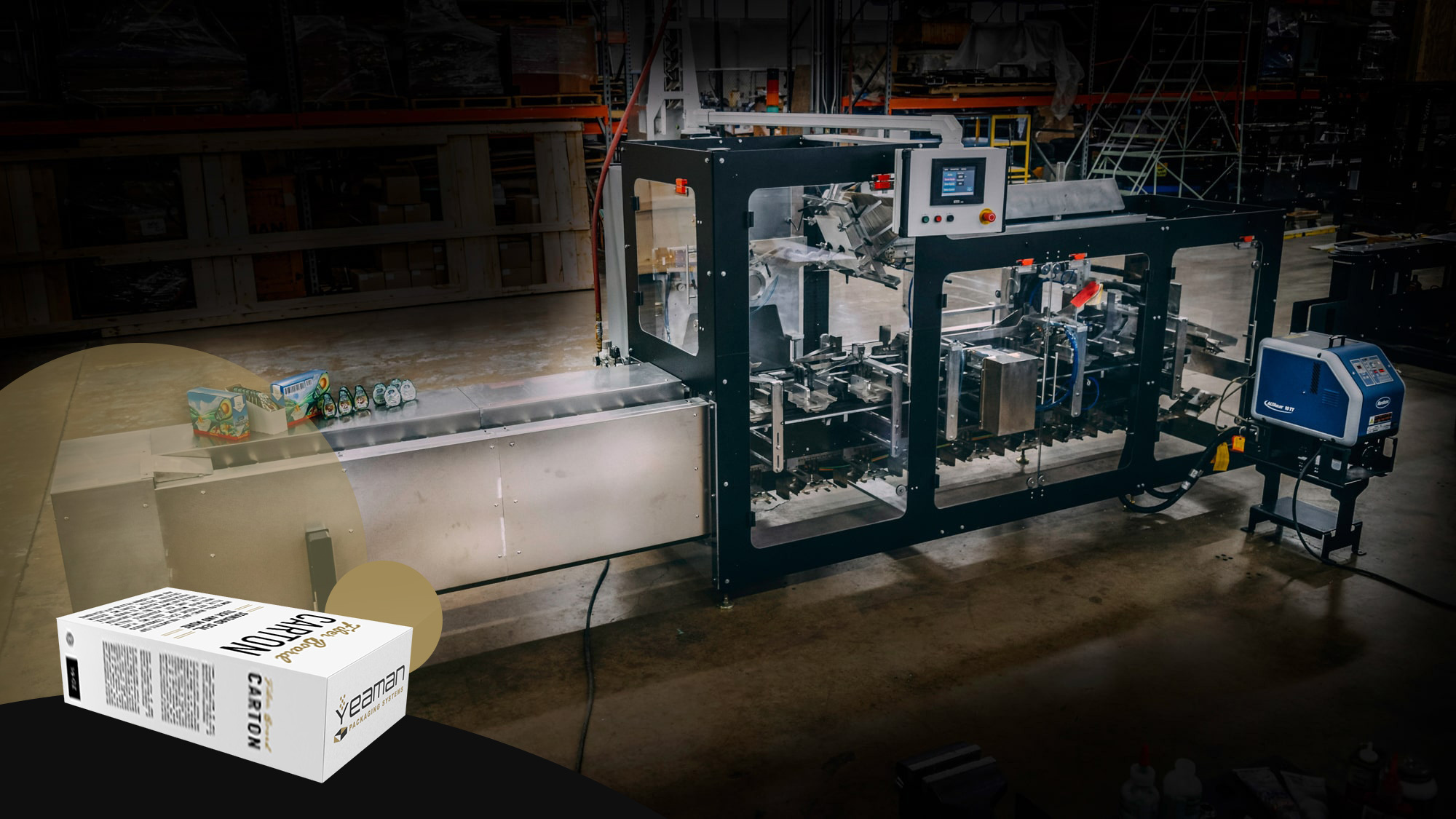What does a horizontal cartoner do?
The operation of a horizontal cartoning machine, or horizontal cartoner, is quite simple. The cartoner process begins with taking flat, side seamed cartons one by one from an inline horizontal carton magazine feeder. Each carton is erected squarely into a carton carrier mounted to a carousal conveyor. Once in place, the carton bottom flaps are folded closed and sealed. The cartons are delivered to the loading area where they meet the product tray.
Product is either placed by hand or automatically into a product tray. The trays move to the product load station where product is pushed from the tray into the carton. If required, an overhead confiner will come down to hold the product in place as it is pushed into the carton. Once the carton is filled, the top flaps are plowed closed and sealed, and then the finished carton is discharged from the machine.
Feature Options
The base equipment across all of our lines utilize the same framework and theory, allowing for us to focus on the part that matters - the best way to handle your products. Our equipment development starts with you. We form an ongoing relationship with our customers and their product lines, finding the preferred practices to produce the best looking packages while maintaining the integrity and consistency of the product inside the packaging.
Almost all of our feature options are standardized equipment. Combining these standard features in the right combination, we can create a machine custom for your specific product, package, and speed. We can also provide machines with the intention to grow. As a result of our dedication to growth, you can start off with a hand-load machine now and add any of the options later to increase automation.
Stop Wasting Product
Standard programming for No Product/No Carton and No Carton/Product Bypass. This ensures that product and packages aren't wasted.
Work on Equipment Safely
Separate high and low voltage electrical enclosures allows you to perform maintenance and repairs under power without being exposed to dangerous high voltages.
Clean and Maintain with Ease
Open frame design allows debris to fall straight to the floor without obstruction and lexan guard doors are designed to lift off of optimal access during maintenance and cleaning.
Standard Seal
Tuck and Seal
Reverse Fold
Fifth Panel
Reverse Tuck
Economy Seal
Straight Tuck
Gable Top
| Model A | Model B | Model C | Model D | Model E | ||
|---|---|---|---|---|---|---|
| Standard Carton Sizes Length of Opening x |
6 Size Ranges Between MIN .75" x .25" x 1.25" MAX 7.75" x 2.5" x 11" See All |
4 Size Ranges Between MIN 2" x .75" x 2.5" MAX 11" x 3.5" x 12" See All |
2 Size Ranges Between MIN 5" x 2.5" x 6" MAX 16" x 9" x 17" See All |
|||
| Extended Carton Sizes Length of Opening x |
MAX 7.75" x 7.5" x 11" |
MAX 11" x 10.5" x 12" |
MAX 16" x 12" x 17" |
|||
| Speed Actual Rates Determined |
Variable to 533/cpm | Variable to 1,166/cpm | Variable to 180/cpm | Variable to 360/cpm | Variable to 75/cpm | |
| Standard Construction |
|
|||||
| Optional Construction |
|
|||||
| Controls |
|
|||||
| Electrical Power Requirements | Wired To Your Plant's Specifications | |||||
| Pneumatic Power Requirements | Approx. 8 CFM 80 psi | |||||


